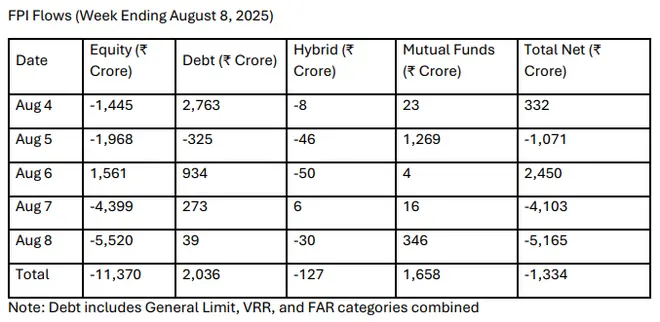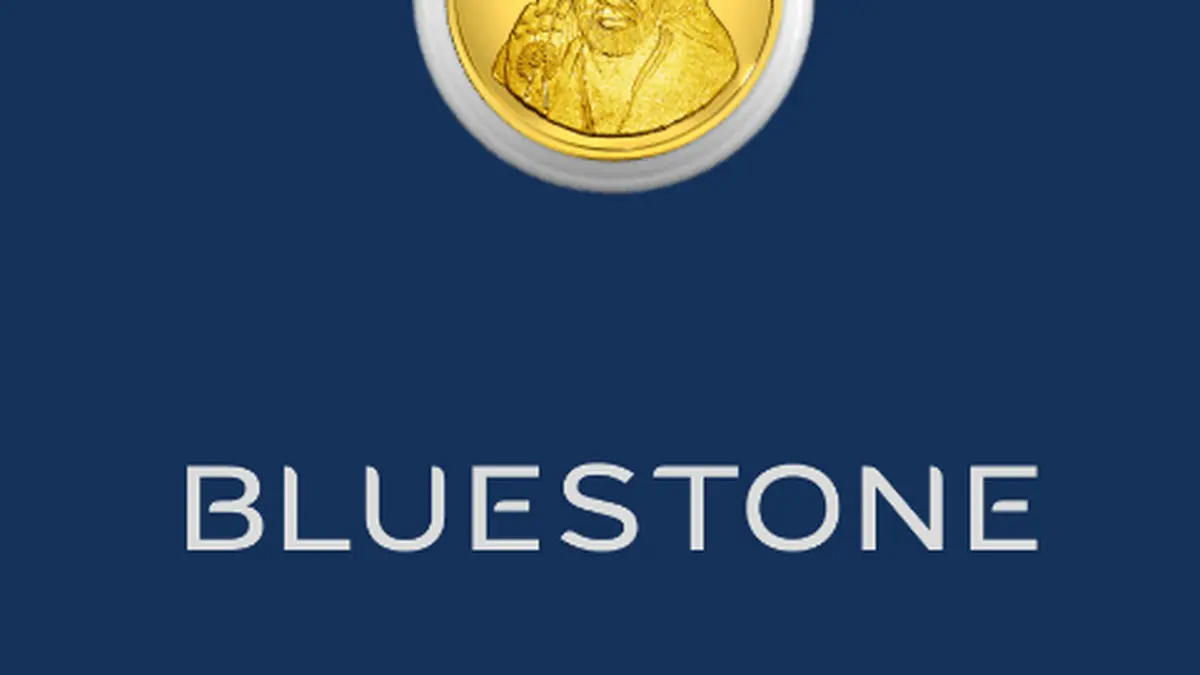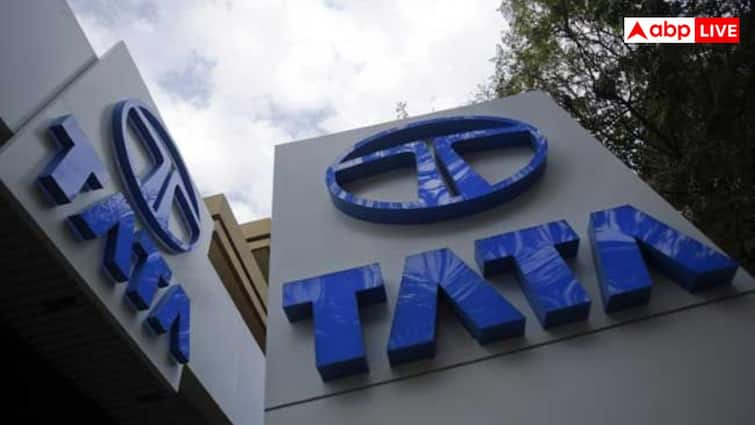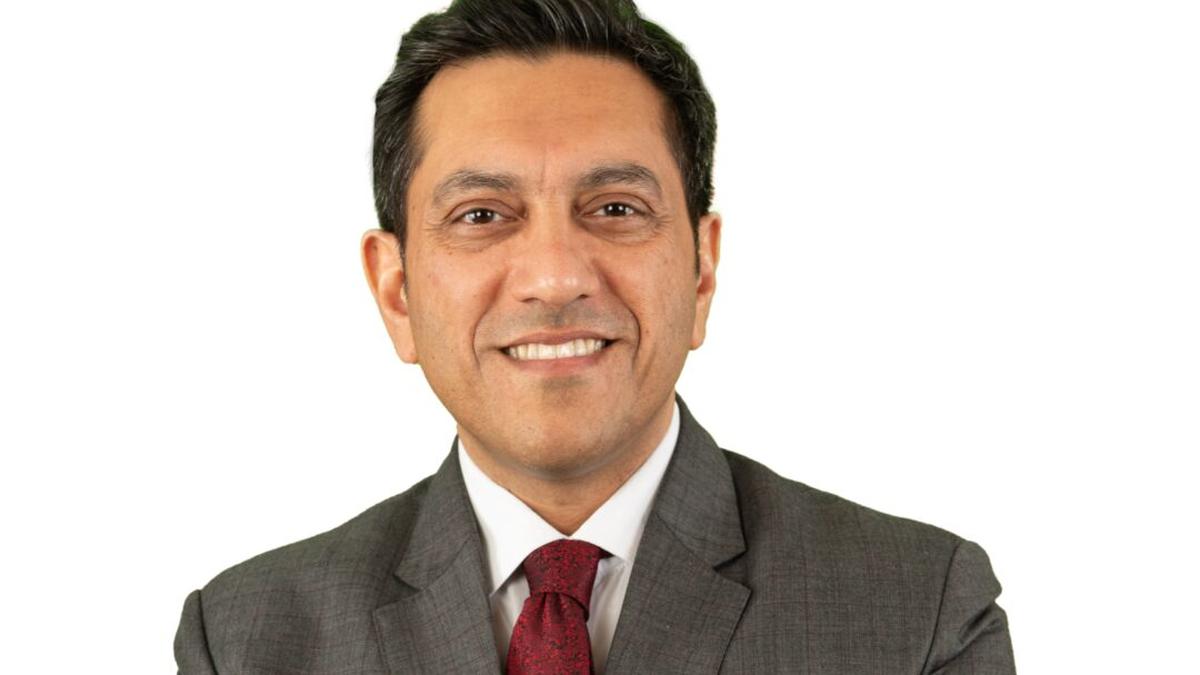Foreign Portfolio Investors (FPIs) continued their selling streak in Indian markets for the fourth consecutive week ending August 8, 2025, with net outflows of ₹1,334 crore, though this represented a marginal improvement from the previous week’s ₹2,000 crore outflow.
The week witnessed significant volatility in FPI flows, with the largest single-day outflow of ₹5,165 crore recorded on August 8, marking one of the heaviest selling sessions. Equity markets bore the brunt of foreign selling, with net outflows of ₹11,370 crore for the week, while debt investments provided some cushion with net inflows of ₹2,036 crore.
“Foreign Institutional Investors (FIIs) continued their significant withdrawal from Indian equity markets, marking the fourth consecutive week of outflows,” said Himanshu Srivastava, Associate Director – Manager Research, Morningstar Investment. “This week saw a total net outflow of approximately ₹1.34 billion, as against the net outflow of ₹2.0 billion in the previous week.”
The selling pattern showed increasing intensity towards the week’s end, with August 7 and 8 recording outflows of ₹4,103 crore and ₹5,165 crore, respectively, after a brief respite on August 6 when FPIs turned net buyers with inflows of ₹2,450 crore.
US-India trade tensions emerged as the primary catalyst for foreign investor retreat. “Factors such as escalating US-India trade tensions played a pivotal role in defining the direction of FII flows this week,” Srivastava noted. “The announcement of a 25 per cent tariff hike on Indian goods by the US government heightened investor concerns, leading to a decline in market sentiment.”
In the debt segment, FPIs showed mixed behavior across categories. General debt limit investments attracted ₹2,729 crore in net inflows, while Voluntary Retention Route (VRR) debt saw modest inflows of ₹117 crore. However, the Fully Accessible Route (FAR) category witnessed significant outflows of ₹2,060 crore, reflecting selective approach by foreign investors.
The rupee’s volatility added another layer of complexity for foreign investors. “The Indian rupee also saw volatility during the week, initially strengthening against the US dollar, before weakening again due to renewed dollar demand,” Srivastava explained. “While the Reserve Bank of India intervened to stabilise the currency, market sentiment remained cautious.”
Corporate earnings disappointment compounded the challenges. “Additionally, disappointing first-quarter corporate earnings and a weakening Indian rupee further exacerbated the selling pressure, as foreign investors reassessed their positions,” Srivastava added.
Vinod Nair, Head of Research at Geojit Investments Limited, highlighted the broader market context. “Since July, the Indian equity market has remained in a phase of consolidation, reflecting weakening investor sentiment due to trade-aligned challenges,” Nair said. “Concerns over steep US tariff rates and underwhelming quarterly earnings have dampened market confidence.”
The pharmaceutical sector, with significant US exposure, faced particular pressure. “Persistent selling by FIIs, particularly in pharma stocks with significant US exposure, underscores this cautious outlook,” Nair observed.
Looking ahead, market participants expect continued volatility. “Market volatility is expected to persist. While risks from US trade tensions and sustained FII outflows remain, potential support from DIIs could offer some relief,” Nair noted. “Upcoming inflation data from both India and the US will be critical in shaping investor expectations.”
The week’s FPI flows underscore the sensitivity of foreign capital to geopolitical developments and domestic fundamentals, with trade policy uncertainties likely to remain a key overhang on investor sentiment in the near term.
Published on August 9, 2025





